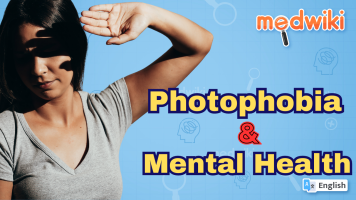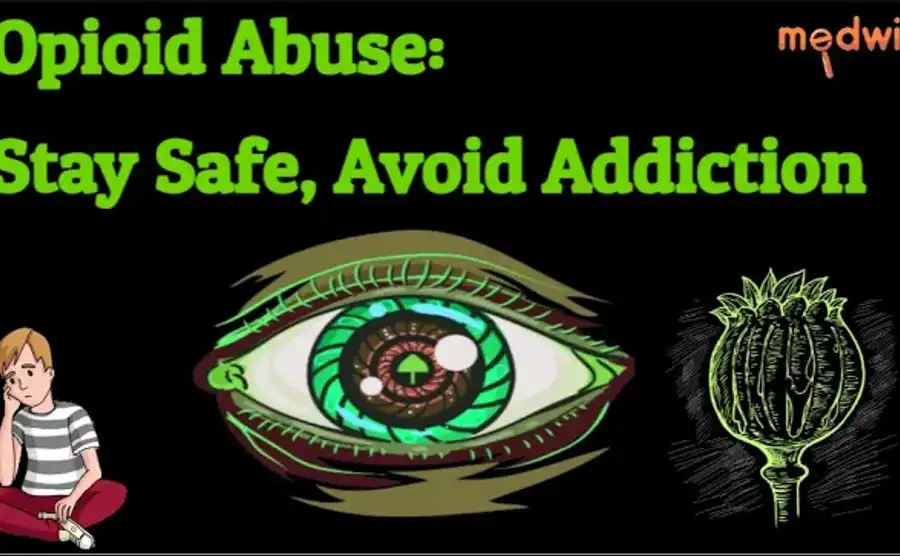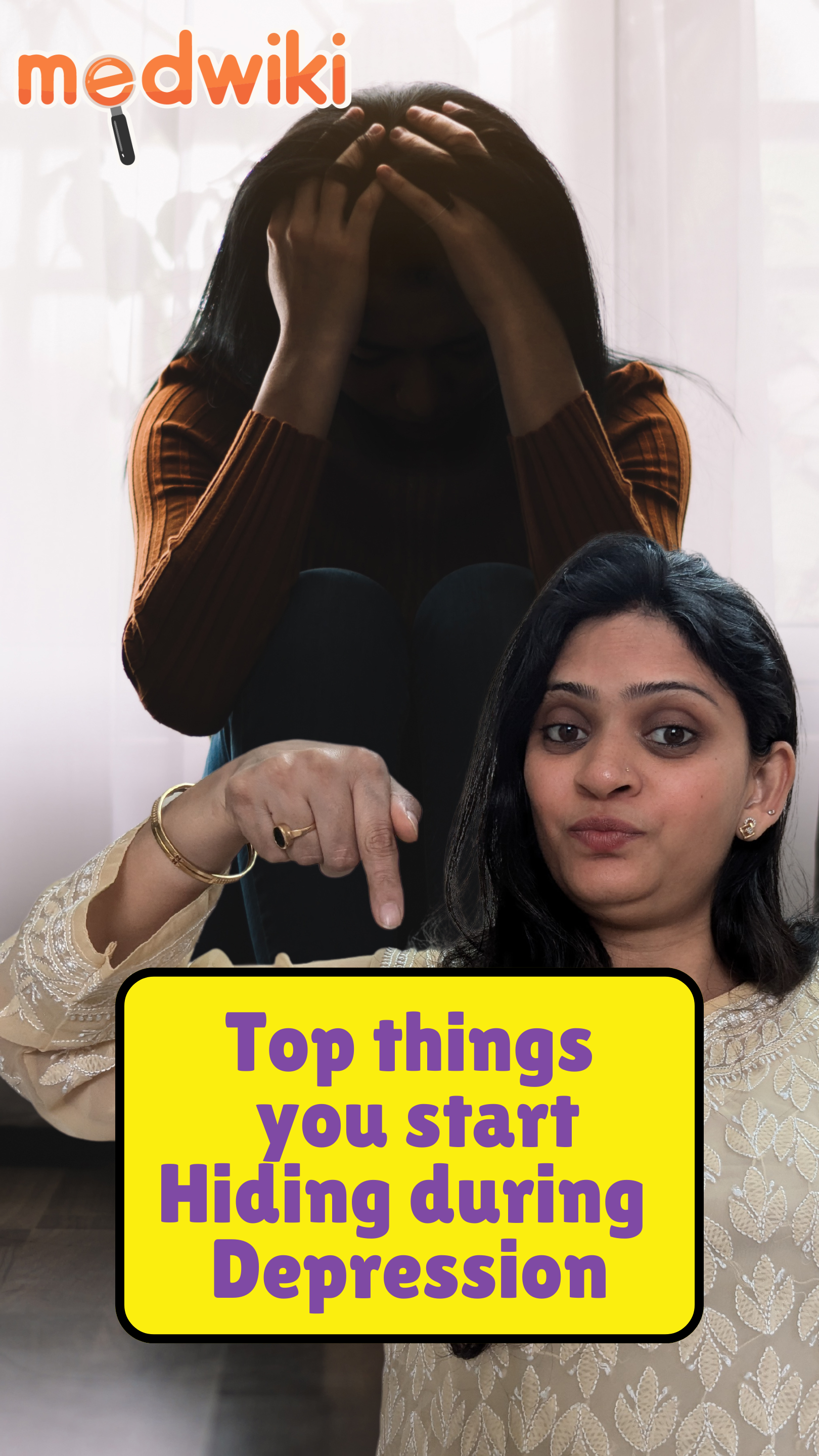Are you familiar with the term photophobia?It's basically a sensitivity to light, and it's quite common among people with mental health disorders. In fact, photophobia has been linked to anxiety, depression, and other mental health conditions.One theory is that bright light can trigger the release of stress hormones, such as cortisol and adrenaline, which can worsen symptoms of anxiety and depression and lead to photophobia. It's like a vicious cycle!Another possible explanation is that changes in neurotransmitter levels in the brain can cause photophobia. Serotonin, a neurotransmitter that helps regulate mood, is also involved in regulating light sensitivity in the eyes. When there are changes in serotonin levels, this can lead to increased sensitivity to light, as well as increased symptoms of depression and anxiety.If you're experiencing photophobia, it's not just in your head. It's a real symptom that can be linked to your mental health.Disclaimer:- This information is intended to supplement, not substitute, advice from your healthcare provider or doctor. It does not cover all possible uses, precautions, interactions, or side effects, and may not be appropriate for your specific healthcare needs. Always consult with your doctor or another qualified healthcare provider before modifying or discontinuing any prescribed portion of your healthcare plan or treatment, in order to determine the best course of therapy for you. Do not ignore or delay professional medical advice based on anything you have seen or read on Medwiki.Find us at: https://www.instagram.com/medwiki_/?h... https://twitter.com/medwiki_inc https://www.facebook.com/medwiki.co.in/
Opioids are a class of drugs that include prescription painkillers like oxycodone and hydrocodone, as well as illegal drugs like heroin. These drugs work by binding to opioid receptors in the brain, which block pain signals and produce feelings of pleasure and euphoria. When opioids are taken in high doses or for extended periods, they can cause physical dependence and withdrawal symptoms.When opioids are taken, they bind to specific receptors in the brain, spinal cord, and other parts of the body. These receptors are responsible for pain relief and pleasure. Opioids activate these receptors, causing a flood of dopamine to be released in the brain. Dopamine is a neurotransmitter that is responsible for feelings of pleasure and reward. Repeated use of opioids can lead to changes in the brain, making it difficult to feel pleasure without the drug. The brain adapts to the presence of opioids and requires more of the drug to achieve the same effects. This is called tolerance.Suggested Read:https://medwiki.co.in/post/opioid-poisoning-and-overdose-enOver time, the brain also becomes dependent on opioids to function normally. When opioid use is stopped, the brain experiences withdrawal symptoms, which can be extremely uncomfortable and even dangerous. This can lead to a cycle of drug use, as people continue to take opioids to avoid withdrawal symptoms. Addiction is characterized by compulsive drug use despite negative consequences. Opioids can hijack the brain's reward system, leading people to prioritize drug use over other activities and responsibilities.Physical dependence occurs when the body adapts to the presence of opioids and requires more of the drug to achieve the same effects. Withdrawal symptoms can include muscle aches, nausea, vomiting, diarrhea, and anxiety, which can be extremely uncomfortable and even dangerous in some cases. Stay Safe, Avoid Addiction!Steps to prevent Opioid Use Disorder:Opioid Use Disorder refers to a condition when opioids lead to addiction rather than just a medication. Opioid addiction is not something to be taken for granted, its misuse or overuse is the reason that almost 90 people die in the US on a daily basis as per the data shared by the American Society of Anaesthesiologists.Opioids are considered safe only when used by people to manage serious pain that an individual may experience after surgery or bone fracture. Opioids should always be taken after consulting a doctor, following the dose and duration strictly prescribed by a doctor. Always make sure to ask your doctor before taking opioids if there is an alternative medication other than opioids that will be as effective as your treatment and never share your opioid medications with anyone. These should be kept away from the reach of children and pets in the house.If you are suffering from lifelong pain, opioids are not an effective and safe treatment option for long-term use. You can try other treatments such as medicines that do not cause addiction or you can also take other therapies in addition to medicines.Suggested Read:https://medwiki.co.in/post/understanding-vape-addiction-risks-and-warning-signs-enProtect your family and community from opioid misuse if your doctor has prescribed opioids to you. Keep your medicines in a secure, safe place where no one can reach them. Discard unused opioids properly and do not throw them away here and there. You can also follow the takeback program to dispose of your medicine, if the takeback program is not running in your area, then you can take the help of a pharmacist.Conclusion:Opioids that are effective in severe pain management carry a significant risk of addiction and dependence. Using opioids over a long period can lead to the development of drug tolerance, in which the body requires a higher dose to achieve the same effect, and prolonged use can lead to the development of a physical dependence that may lead to withdrawal symptoms when you stop taking the drug.To prevent opioid use disorder, it is important to follow your doctor's guidance when taking the medications, explore non-opioid alternatives, and store the medicine securely so that no one else can misuse it. The consequences of opioid addiction can be devastating. Safe disposal of unused opioids is very important including a takeback program so that you can prevent their overuse among your loved ones and community. Opioid misuse and addiction can be prevented by using this drug responsibly and spreading awareness.Disclaimer:- This information is intended to supplement, not substitute, advice from your healthcare provider or doctor. It does not cover all possible uses, precautions, interactions, or side effects, and may not be appropriate for your specific healthcare needs. Always consult with your doctor or another qualified healthcare provider before modifying or discontinuing any prescribed portion of your healthcare plan or treatment, in order to determine the best course of therapy for you. Do not ignore or delay professional medical advice based on anything you have seen or read on Medwiki.Find us at: https://www.instagram.com/medwiki_/?h… https://twitter.com/medwiki_inc https://www.facebook.com/medwiki.co.in/
“You must have heard neuropathy is a kind of pain, but do you also struggle to distinguish it from others?”If yes, continue reading.What is neuropathy?Neuropathy is a condition thatoccurs when the nerves in your peripheral nervous system, which are responsible for sending signals between your brain and the rest of your body, become damaged. This can be a result of a variety of physical injuries, infections, toxins, or metabolic disorders like diabetes.The name neuropathy is derived from two Greek words:Neuro from ‘neuron’ meaning nervePathy from ‘pathos’ meaning meaning sufferingSuggested read: Personalized Mapping for Treatment of Neurological ConditionsWhat are the symptoms of neuropathy?Muscle weaknessParalysisUncontrolled movementNumbnessPainBlood pressure changesSexual dysfunctionSuggested read: What Happens To Brain In DepressionWhat causes neuropathy?Some of the major factors contributing to neuropathy are diseases or disorders, injury, alcohol, toxins, infections, autoimmune disorders and the use of certain medications. When these factors interfere with the normal functioning of your nerves, the signal transmission changes, causing sensations like burning, tingling, pain, cramps, twitching, muscle weakness or numbness in the body.Your nerves are covered by a protective covering called myelin sheath. When this covering is damaged, the nerve fibers get exposed and damaged, leading to pain, weakness, and abnormal sensations.It is therefore important to understand the causes of neuropathy so that you can take early steps to protect your nerves and prevent neuropathy.Suggested read: What Happens To Brain In Depression
Patients with severe Parkinson’s or other neurological conditions that cause uncontrollable symptoms such as shaking, spasms, seizures, obsessive thoughts, and compulsive behaviors may be treated with electric brain stimulators. These stimulators interrupt aberrant signaling that causes the symptoms, providing some relief to some patients. Some patients may experience side effects like memory loss, mood changes, or loss of coordination with little symptom improvement.Stimulators are implanted in the thalamus and basal ganglia, central brain structures that coordinate movement, vision, and other brain functions by exchanging information between neurological networks. Electrodes placed in the same anatomical spot may influence different networks in different people, so each person's functional networks are positioned slightly differently. The thalamus and basal ganglia, which have been linked to neurological and psychiatric conditions such as Parkinson’s disease, Tourette’s syndrome, and obsessive-compulsive disorder, connect different parts of the brain.However, mapping these structures is technically challenging and requires large amounts of data, which has been a challenge for neurosurgeons who lack individualized maps of brain functions in these areas.The researchers created functional network maps of the basal ganglia and thalamus. These maps can help explain why people with neurological and psychiatric conditions exhibit different symptoms, and why electrode placement in these areas can have varying results. The study suggests that precise targeting of the correct functional network, and avoidance of the incorrect network, is essential for successful deep-brain stimulation results. By using a patient's personalized functional brain map instead of the average anatomical map, better results may be achieved.Source:- https://www.futurity.org/deep-brain-stimulation-variation-2233002/Disclaimer:- This information is not a substitute for medical advice. Consult your healthcare provider before making any changes to your treatment. Do not ignore or delay professional medical advice based on anything you have seen or read on Medwiki.
Shorts
Overcome Depression: When to talk to a doctor!
Mrs. Prerna Trivedi
Nutritionist
What is Dyslexia, How dangerous it is, How to Diagnose and Manage Dyslexia!
Mrs. Prerna Trivedi
Nutritionist
Top things you start hiding during depression
Mrs. Prerna Trivedi
Nutritionist
Is your child depressed?
Mrs. Prerna Trivedi
Nutritionist










